It's not everyday that you begin a feature with a definition of one of the words in the title. Still, here we go. Best [best]: (adj.) A standout amongst counterparts; of the highest quality, excellence or standing. Now that you know what we think "best" means, take note that these are our opinions. None of us are opthalmologists, optometrists or otherwise experts on optics, nor can any of us every recall claiming to be so. That said, we wear a lot of fishing sunglasses and consider it very serious business. Trust me, if you're otherwise obsessed with gear -- and you're not currently obsessing over sunglasses -- boy, are you missing out.
Frivolous obsessions aside, however, sunglasses are one of the most important and crucial pieces of gear in a fisherman's arsenal. While it's certainly not always true in fishing that you can't catch what you can't see, vision is one of the key aspects of the game. Sunglasses play a key role in how good your vision on the water is, so there's a lot to be said for getting it right.
The few selections that follow are our favorite of the glasses we tested during this past year. Some of these are new to market, some are not.
Smith Optics Chief Polarchromic Copper Mirror
Since they arrived, the Smith Chiefs have been perhaps our most go-to pair of glasses. This is due in no small part to their amazing versatility. There is little surprise in this fact, as we've been extolling the virtue of Smith Optics' glasses for years. Smith bestowed the Chief with their usual hallmarks: high quality plastic frames with an underlying metal core, metal spring hinges, Smith's TFT polarized glass, megol pads on the nose and temple and anti-reflective and hydroleophobic lens coatings.

What We Liked
At the end of the day, the most important feature of a pair of sunglasses -- especially fishing sunglasses -- is their lens. Day after day, the lenses in the Smith Chief continue to amaze. Clarity is startling. As we're often changing glasses, returning to the Chiefs repeatedly elicits the same reflection on how crisp and clear the lenses are and how full of life the tone is.
The polarchromic lens which, in addition to being polarized, darkens and lightens depending on the amount of ambient light also seems to shine at virtually all times of the day and lighting conditions. The spring hinges and megol pads keep the Chiefs snugly in place and the frames wear surprisingly light for large framed glass-lens sunglasses. We also loved the large coverage on the Chief, matching or exceeding glasses we tested with aggressive wrap-around styling that made for great coverage but abhorrent styling.
Smith Optics Chief Polarchromic Copper Mirror on Amazon.com
Maui Jim Stingray HT / HCL Bronze
The Stingray and other models with Maui Jim's standard and much-loved HCL Bronze lens have been our go-to fishing glasses for many years now. Maui's HCL Bronze lens offers versatility and amazing optical clarity and has become the favorite of many fisherman around the world. After our recent testing of the Maui Jim Stingray with both the HCL Bronze and Maui HT lens, we just may have found the perfect 2-pair quiver of fishing sunglasses.

What We Liked
Maui Jim consistently excels beyond all other manufacturers in frame quality. Even compared to the aforementioned Smith Optics Chief, which rests significantly above the rest of the pack in regards to frame quality, the frames of the Stingray stand out. The sturdiness and well-constructed feel of Maui Jim's frames are immediately apparent, and the spring hinges seem bulletproof compared to flimsier competition.
As mentioned, the HCL Bronze lens is a versatile lens offering stunning optical quality and excellent polarization. It was our testing of Maui Jim's HT (High Transmission) lens that provided perhaps the biggest surprise of all the many pairs of glasses we tested. The HT lens is designed to offer better visibility in low-light situations such as early morning and evening while boosting depth-of-field and contrast. We unsurprisingly found it to do exactly that but were surprised at how well-rounded the HT lens turned out to be. Not only did the HT lens allow us to wear polarized lenses when other sunglasses we tested were much too dark (and we're talking very early morning and till near-dark in the evening), but they've become our all-day lenses on overcast days and also carried us through much of the day on all but the sunniest outings.
Packing the Maui Jim Stingray in both lens options may offer the best of all possible combinations. To be fair, a two-pair quiver of fishing sunglasses that come to the table at $215 per pair may not be in the cards for a lot of people out there. Given that, it's worth mentioning that either of these two pairs of glasses stand up to the competition almost as well on their own merit.
Maui Jim Stingray HCL Bronze Lens | HT Lens on Amazon.com
Part Two
Be sure to check out Best Sunglasses of 2011: Part Two, which details the remainder of our 2011 favorites.





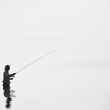











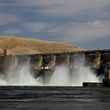




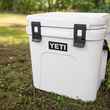





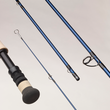
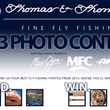
Comments